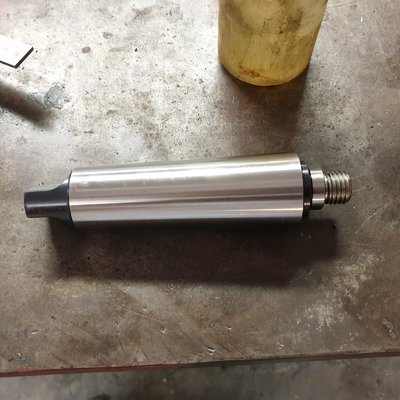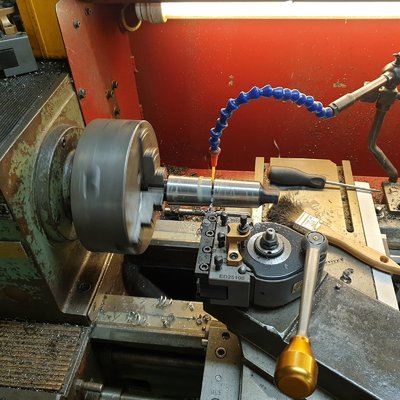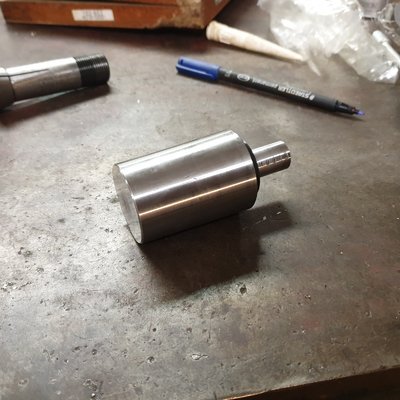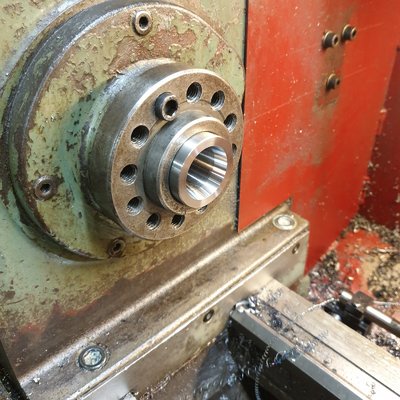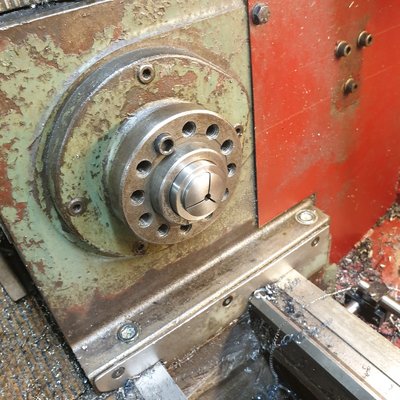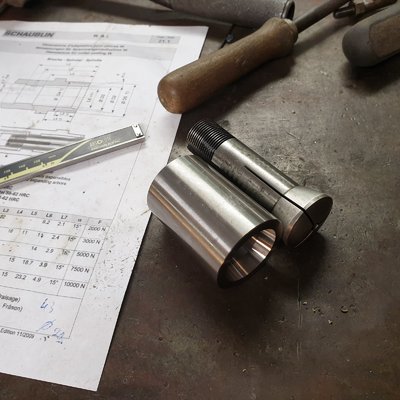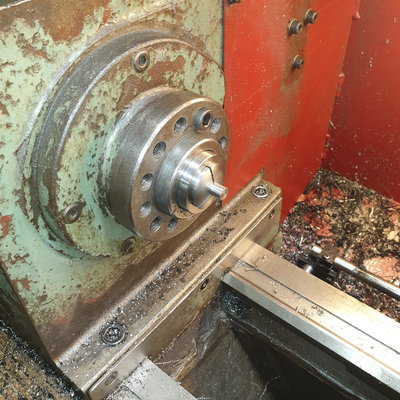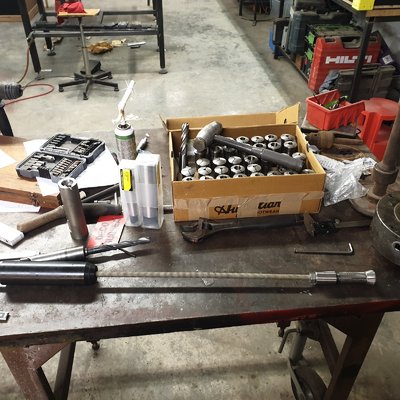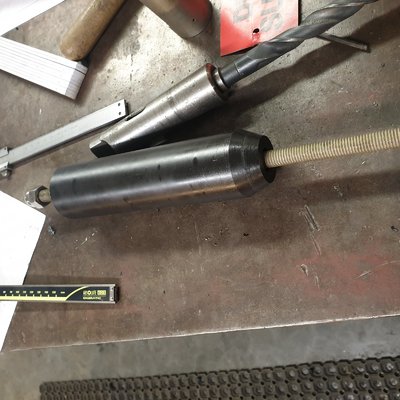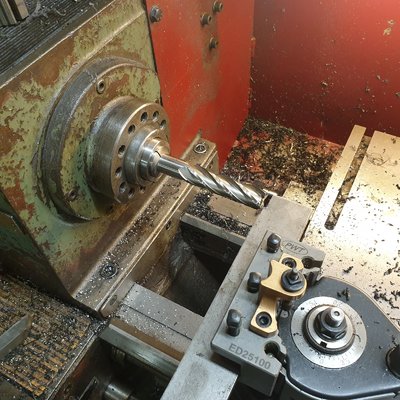Messing around trying to make a collet chuck holder for my lathe, i have a flat plate that bolts onto the spindle with the correct taper that came with the lathe. First idea was to make a piece that bolts onto the plate (see sketch below), but i have no accurate way drill the flange holes at the correct spacing, i printed out the pattern on sticky paper and tried transferring it that way onto the part, but it wasn't accurate enough so this attempt ended in disaster :-) .
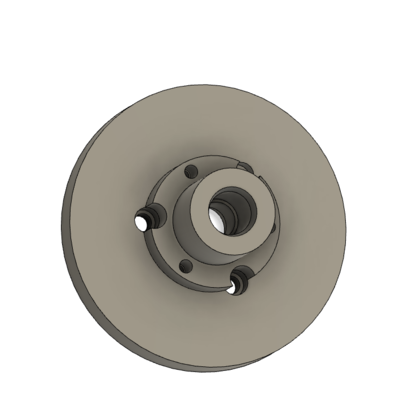
I could do away with the flange all together and weld or Tig braze the collet holder directly onto the plate at the red arrow on the drawing. Is this a good idea, the flange itself is cast iron, the collet holder would be mild steel. I would clean up the center hole in the cast iron plate and then machine a protruding part in the collet holder that would fit into the center hole of the plate.
Once it's all brazed up i could clean up the OD and drill bore,... the center portion of the collet holder making everything concentric.


I could do away with the flange all together and weld or Tig braze the collet holder directly onto the plate at the red arrow on the drawing. Is this a good idea, the flange itself is cast iron, the collet holder would be mild steel. I would clean up the center hole in the cast iron plate and then machine a protruding part in the collet holder that would fit into the center hole of the plate.
Once it's all brazed up i could clean up the OD and drill bore,... the center portion of the collet holder making everything concentric.






